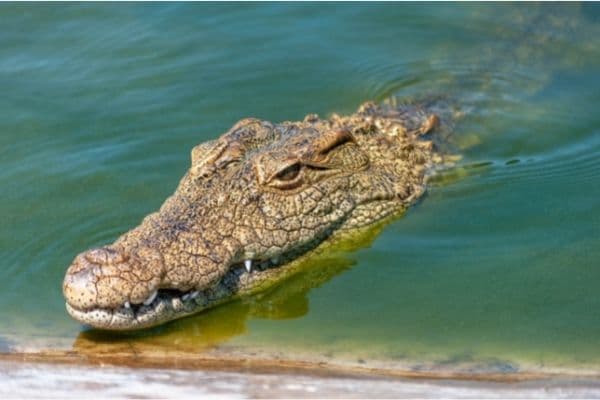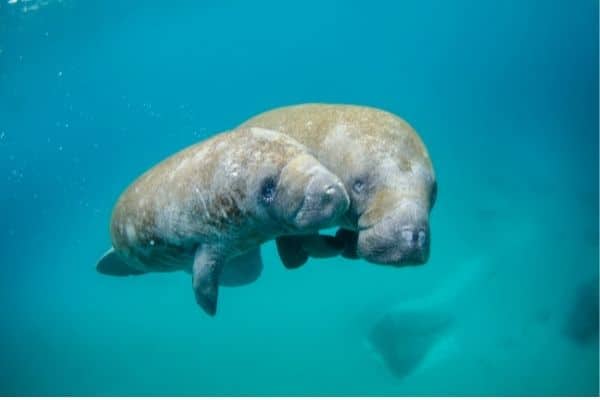Most visitors to the island of Jamaica don’t come explicitly for the wildlife. Culture and beach vacations are probably the two most compelling reasons to visit. However, Jamaica has rich flora and fauna in most parts of the island. Therefore, there are lovely animals in Jamaica.
Page Contents
Here is a list of Various Animals in Jamaica
Sea turtle-
The Sea Turtle is an endangered species in Jamaica, but one that has found some much-needed protection at the Oracabessa Bay fish sanctuary. Nesting usually at night, the turtle will crawl ashore and dig a small hole in the sand to lay the egg. Around 60 days later, the hatchlings will emerge and attempt to go to the sea. In the best-protected areas, the baby turtles have the sand smoothed for them by conservationists who conduct a health check on the new arrivals.
Patoo-
This large elegant bird can be found in small numbers across the island. There are two main species, the barn owl and the Jamaican Owl. The barn owl is a beautiful ghostly white creature that glides low through the night sky. When the moon is bright, the Owl takes an eerie glow and can often be seen perched on posts and trees in Kingston’s hilly green neighborhoods. The Jamaican Owl, by contrast, is tawny brown and has long ear tufts.
Crocodiles-
Jamaica has small American crocodiles that dwell on the south coast. Adults can grow to six meters long and 2000 lbs but are more commonly half that size. The crocodiles are now protected and making a slow recovery. Thanks to some dedicated conversationalists!
Mongoose-
The Mongoose was introduced to Jamaica by the government in 1872 to combat the rat population playing havoc with the sugar plantations. The mongoose, a fearsome hunter, was massively successful in its mission but then decimated the ground bird population and some indigenous snakes and lizards.
Manatee-
The endangered Manatee enjoys shallow brackish coastal waters, primarily where rivers flow into the sea, providing a source of drinking water. These large gentle creatures can weigh 1000 lbs and measure one to four meters in length. They breathe air and so surface frequently, meaning that if manatees are nearby, it is likely you will spot them.
How many animal species live in Jamaica?
Ans :– A fundamental question has been discussed in the above paragraph. On record, you will find 21 amphibians, 28 species of birds, 27 reptiles, and 500 land snails native to Jamaica. There are also bats, butterflies, insects, and several other categories found!
Land Mammals of Jamaica: Getting to Know the Locals
Alright, let’s dive into the furry friends you might come across in Jamaica:
1. Jamaican Hutia:
- Meet the Jamaican Hutia, also known as the Jamaican coney or “Banana rat.” Picture a chubby rodent with a knack for climbing trees and exploring the island’s lush forests.
- Home Sweet Home: You’ll find these guys chilling in forested areas, from the dense rainforests to the scrublands and even up in the mountains.
- Night Owls: Jamaican Hutias are creatures of the night, munching on leaves, fruits, and nuts while the rest of the island sleeps.
- Keeping Watch: Sadly, these little guys are facing some tough times. Habitat loss and hunting have put them on the vulnerable list, so we’ve got to look out for them.
2. Jamaican Coney:
- Say hello to the Jamaican Coney, a small ball of fluff that looks like a guinea pig’s cousin. With its round body and short legs, it’s easy to spot scurrying around Jamaica’s diverse landscapes.
- Everywhere You Look: You’ll find these critters all over the island, from the forests to the farms and everything in between.
- Midnight Snackers: Just like their Hutia buddies, Jamaican Coneys prefer to do their dining under the cover of darkness. Fruits, seeds, insects – you name it, they’ll eat it.
- The Unknown: We don’t know as much about these guys’ conservation status, but with habitat loss and new predators popping up, they might need a helping hand too
Endangered Species and Conservation: Protecting Jamaica’s Precious Wildlife
1. Endangered Species:
- Jamaican Iguana: The Jamaican iguana, also known as the Jamaican rock iguana, is critically endangered. Habitat loss, invasive species, and poaching have pushed this iconic reptile to the brink of extinction.
- Jamaican Yellow Boa: Another endangered species is the Jamaican yellow boa, a non-venomous snake found only in Jamaica. Deforestation and persecution by humans have significantly reduced its numbers.
- Jamaican Piping Plover: This bird species, native to Jamaica’s coastal areas, is classified as endangered due to habitat destruction, pollution, and disturbance of nesting sites by humans and domestic animals.
2. Ongoing Conservation Projects:
- Jamaican Iguana Recovery Program: Established to protect and conserve the Jamaican iguana, this program focuses on habitat restoration, captive breeding, and community education to raise awareness about the iguana’s plight.
- Jamaica’s Endemic Bird Conservation Program: This initiative aims to conserve Jamaica’s unique bird species, including the Jamaican piping plover, through habitat preservation, research, and community engagement.
- Jamaica Environment Trust (JET): JET works on various conservation projects across Jamaica, advocating for sustainable development, protection of natural resources, and environmental education.
3. Importance of Preservation:
- Jamaica’s wildlife is part of its cultural and ecological heritage, contributing to its biodiversity and natural beauty.
- Preserving endangered species and their habitats is crucial for maintaining healthy ecosystems, which provide essential services like clean air, water, and pollination.
- Conservation efforts not only protect Jamaica’s unique wildlife but also support ecotourism and sustainable development, benefiting local communities and the economy.
Animal Hospital in Jamaica Queens
There are many animal hospitals in Jamaica, Queens. Some of the best hospitals have been discussed below:
1. Williamsburg Veterinary Clinic-
This Hospital was established in 2005. The hospital provides medical, surgical, and dental care to cats and dogs. Williamsburg believes that patient and client care are critical and will provide you with service that will exceed your expectations. The team of veterinarians, registered veterinary technicians, receptionists, and veterinary assistants work together to provide the best care possible to your pet!
2. Crawford Animal Hospital of Lynbrook-
The Hospital is located in Lynbrook, New York, the United States is a part of other professional, scientific, and Technical Services industries. Crawford has 11 total employees across all of its locations. The hospital provides a full range of preventative, medical, and surgical services. They also offer boarding, medical boarding, and grooming.
3. Fresh Meadows Animal Clinic-
Fresh Meadows headquarter in New York. It is a full-service veterinary hospital located in Queens, New York, offering veterinary medicine, veterinary surgery, veterinary dentistry, veterinary care for dogs and cats. It is an animal clinic serving Queens and Brooklyn.
4. Merrick Blvd Animal Hospital-
The hospital has been grown and operated on for over 20 years. The doctors and staff have earned an excellent reputation by offering complete services to their four-footed patients and caring owners. The hospital is open six days a week! Appointments are preferred, but walk-ins are welcomed too. Emergency care is available too. House calls for senior citizens, and housebound clients can be arranged based on availability.
5. Queens Midway Animal Hospital-
Like all veterinarians, Queen Midway Animal Hospital accepts pet insurance for unexpected accidents and illnesses. Having pet insurance is the best way to avoid unanticipated medical costs. Still, if you have expenses for existing medical conditions and need help financing the price, you should ask your vet if they accept financing solutions like Care credit and Scratch pay.
Now, talking about the most googled question, i.e., How is Angell Animal Hospital in Jamaica Plain rated? Angell Animal Hospital Center cares for more than 50,000 animals a year and is one of the most acclaimed veterinary practices in the country. Angell has over 65 doctors, nearly half board-certified and experienced support staff who work as a team to ensure high-quality emergency and specialty care. Angell is open for emergencies 24 hours every day of the year and offers night and weekend appointments with specialty services.
Ecotourism and Wildlife Experiences: Embracing Nature in Jamaica
1. Ecotourism Opportunities:
- Blue Mountains National Park: Explore the lush forests and scenic landscapes of Jamaica’s Blue Mountains. Hike the trails, birdwatch, and learn about the park’s rich biodiversity.
- Cockpit Country: Discover the unique karst topography of Cockpit Country, home to diverse flora and fauna, including endemic species like the Jamaican Tody and Giant Swallowtail Butterfly.
- Black River Safari: Take a boat tour along the Black River, Jamaica’s longest river, and spot crocodiles, birds, and other wildlife in their natural habitat.
- Marine Sanctuaries: Dive or snorkel in Jamaica’s marine sanctuaries, such as Montego Bay Marine Park and Negril Marine Park, to witness colorful coral reefs, tropical fish, and marine life.
2. Recommendations for Responsible Wildlife Experiences:
- Choose Certified Eco-Tours: Opt for guided tours and experiences offered by certified eco-tour operators who prioritize sustainability and conservation.
- Respect Wildlife and Habitat: Observe wildlife from a distance and avoid disturbing animals or their habitats. Follow designated trails and respect protected areas.
- Support Conservation Initiatives: Contribute to conservation efforts by visiting wildlife reserves, national parks, and eco-friendly attractions that reinvest revenue into conservation projects.
- Learn from Local Guides: Engage with knowledgeable local guides who can provide insights into Jamaica’s wildlife, ecology, and conservation challenges.
- Reduce Environmental Impact: Practice responsible tourism by minimizing waste, conserving water and energy, and supporting eco-friendly accommodations and transportation options.
Animal Nutrition and Animal physiology courses offered in Jamaica
The ICAR- National Institute of Animal Nutrition and Physiology was established on 24th November 1995 at Bangalore under the aegis of the Indian Council of Agricultural Research, New Delhi. The Journal of Animal Physiology and Animal Nutrition publishes original papers in animal physiology, biochemistry, physiology of nutrition, animal nutrition, feed technology, and preservation. Well-conducted scientific work that meets the technical and ethical standards is considered only based on scientific rigour. Pharmacological or toxicological experiments with a direct reference to nutrition are also considered.
What is Trending Animals in Jamaica Hills?
Many areas of Jamaica are lovely, with rich flora and fauna. Most visitors that travel to the island are looking for beaches and culture. Many leave impressed by the native wildlife. There are minuscule Insects and giant reptiles, massive bears, and large crabs. Jamaica is a world of diverse animals and a natural paradise.
The red-billed streamertail is the national bird of Jamaica. A member of the hummingbird family, the streamertail is also known as the scissor-tail or doctor bird. This is a beautiful, multi-colored creature found among flowering plants in closed forests. The mature males have two tails that stream as they fly.
Jamaica is the land of wood and water, a natural wonder of rolling green hills and stunning views. Animal lovers look to see the most beautiful native creatures, many unique to the island. Thus, despite all this, several other animals are found in Jamaica, namely, Crocodiles, Mongoose, Giant SwallowTail, Patio, and many more.
Here is an answer to the most asked question: what is the trending animal in Jamaica Hills! Thus, we suggest you go through this article thoroughly and learn about animals in Jamaica.







